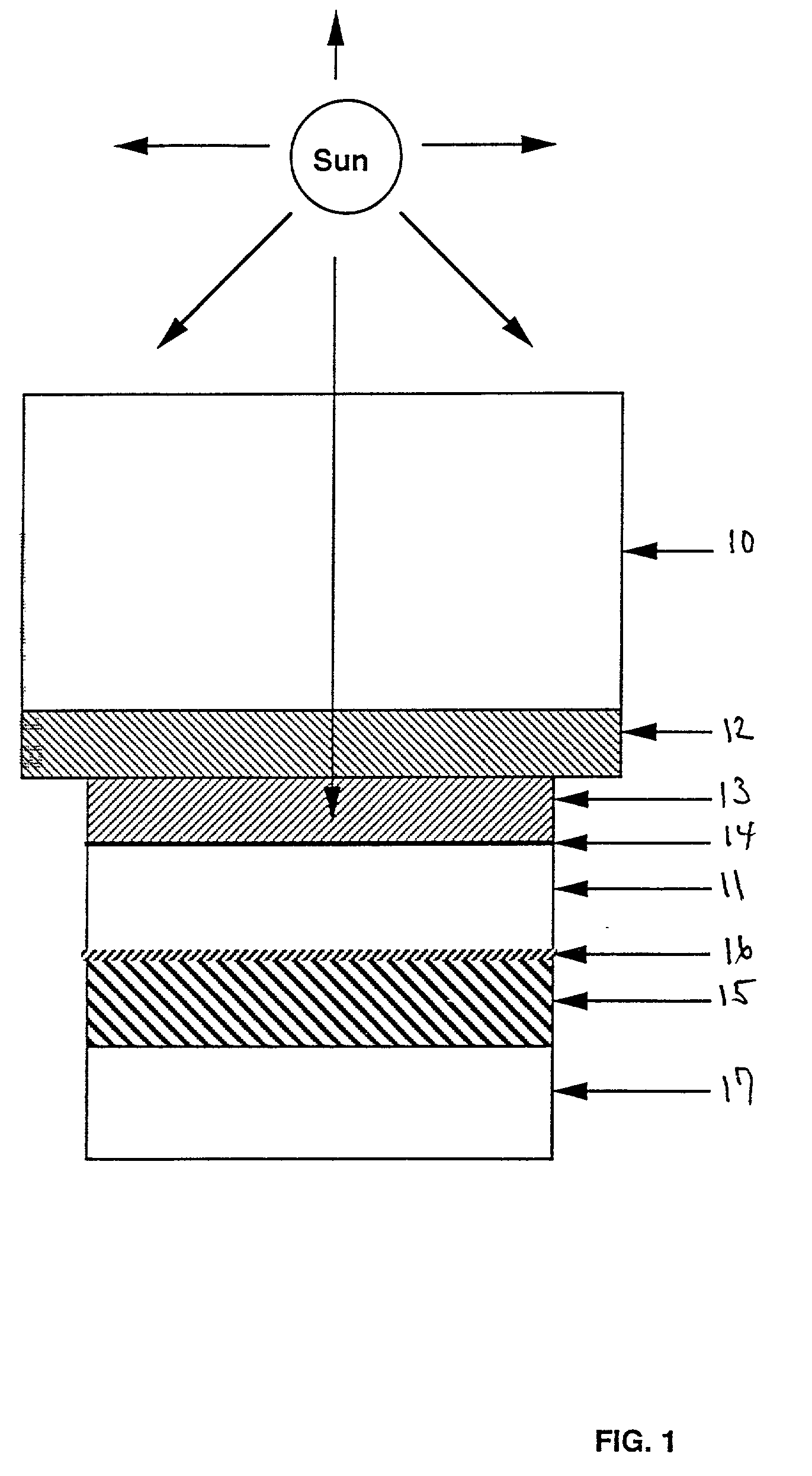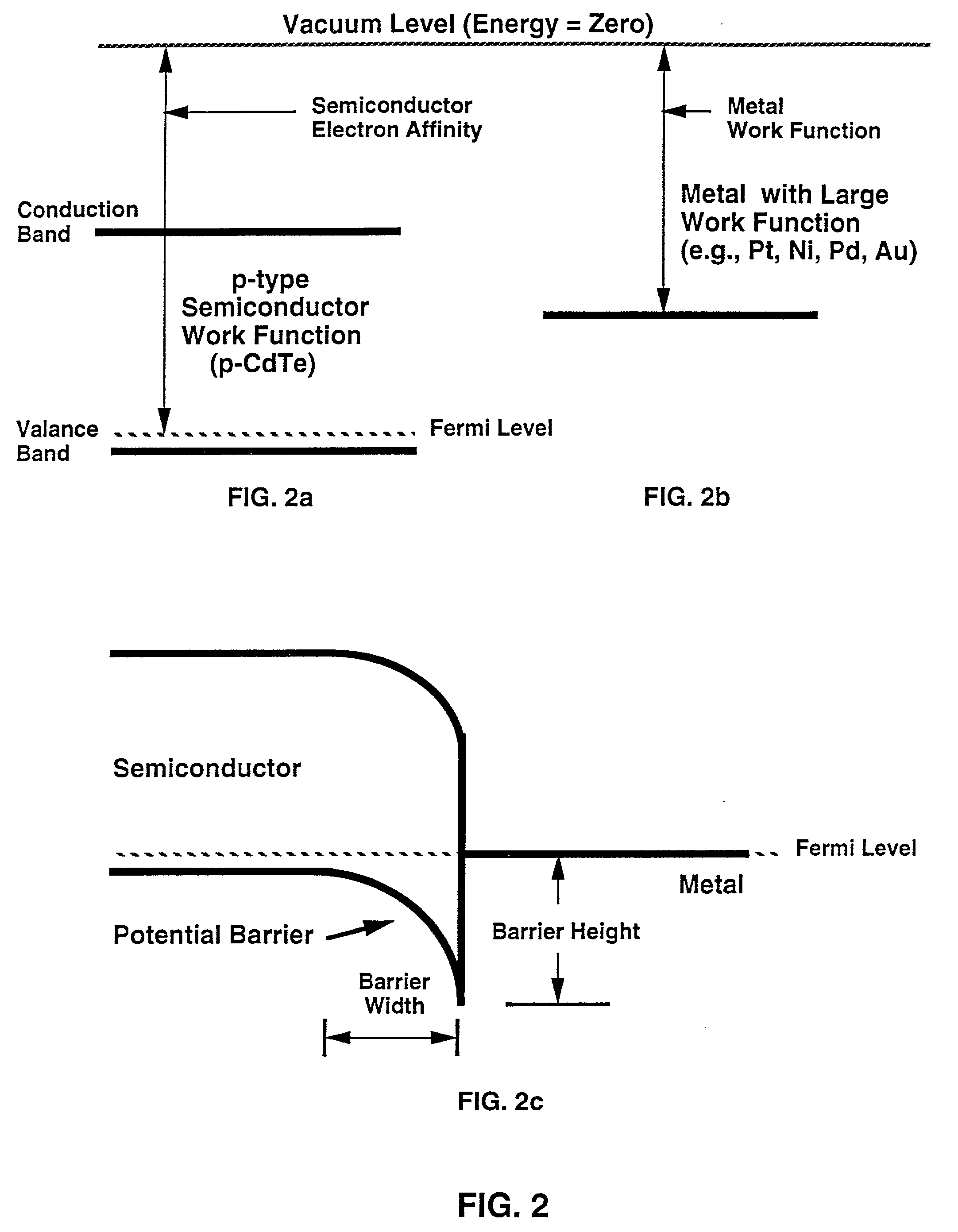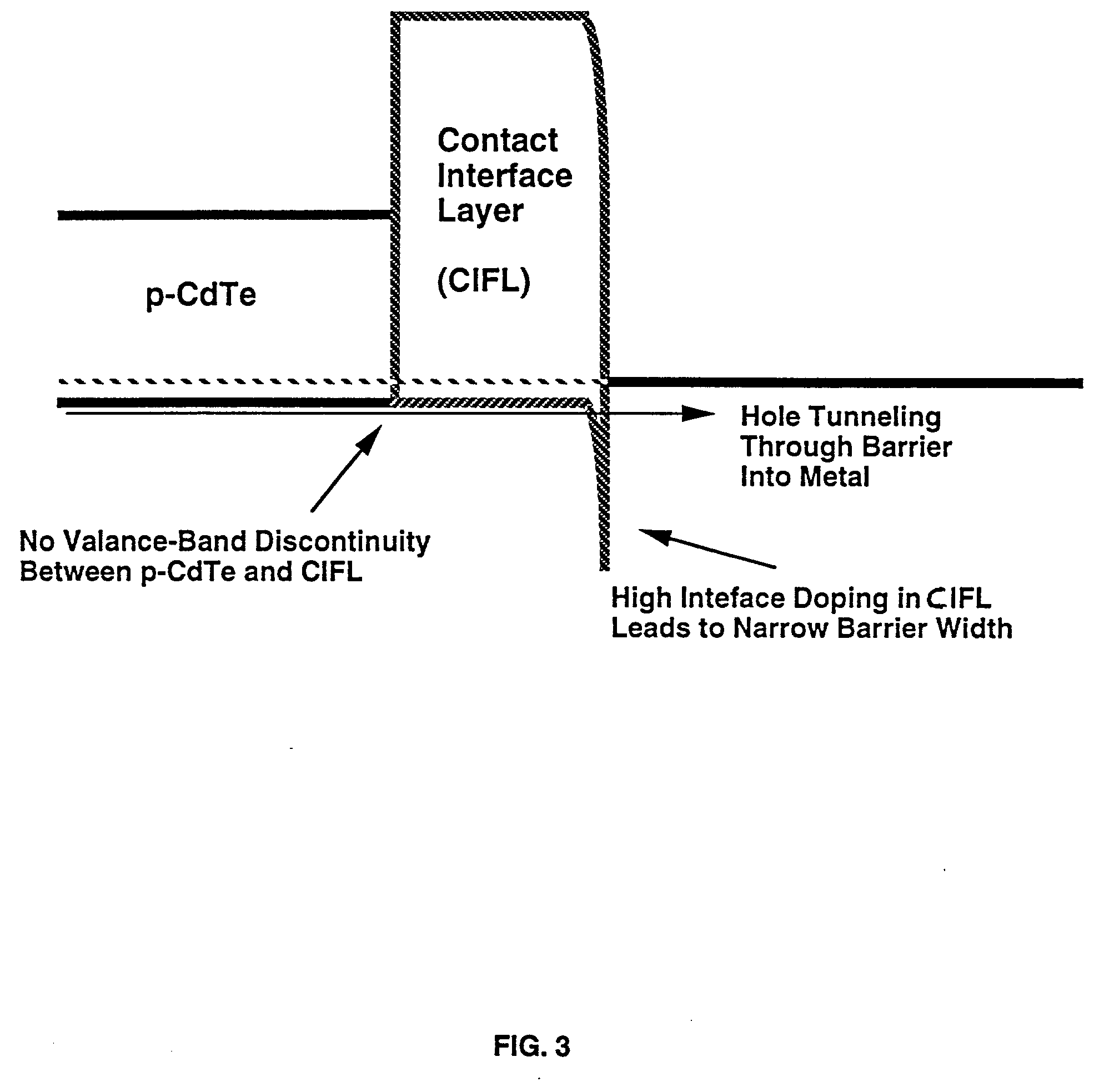Plasma & reactive ion etching to prepare ohmic contacts
a technology of reactive ion etching and ohmic contacts, which is applied in the direction of sustainable manufacturing/processing, final product manufacturing, vacuum evaporation coating, etc., can solve the problems of low carrier mobility, high material cost, and difficulty in settling single crystalline materials
- Summary
- Abstract
- Description
- Claims
- Application Information
AI Technical Summary
Benefits of technology
Problems solved by technology
Method used
Image
Examples
Embodiment Construction
[0041] A CdS / CdTe is placed into a chamber and evacuated to pressures <1e-3 torr using appropriate vacuum pumps. The sample is oriented on a sample holder with the p-CdTe side of the sample facing the plasma region (p-CdTe side up). The sample is positioned on the sample holder to allow for sample heating or cooling. In the case of Reactive Ion Etching (RIE), the sample holder is disposed to provide a radio-frequency (r.f.) bias by an appropriate power supply, capacitive matching network, electrical feedthroughs, and electrical insulation. After the sample is loaded into the processing chamber, the chamber is evacuated to an appropriate base pressure.
[0042] After the base vacuum pressure is established within the processing chamber, the chamber is backfilled with Ar and any other reactive gas species through pressure appropriate for plasma ignition and operation (.about.1e-2 torr). The plasma generates energetic gas species (e.g. electrons, atomic neutrals and ions), and these vario...
PUM
| Property | Measurement | Unit |
|---|---|---|
| frequency | aaaaa | aaaaa |
| current efficiencies | aaaaa | aaaaa |
| current efficiencies | aaaaa | aaaaa |
Abstract
Description
Claims
Application Information
 Login to View More
Login to View More - R&D
- Intellectual Property
- Life Sciences
- Materials
- Tech Scout
- Unparalleled Data Quality
- Higher Quality Content
- 60% Fewer Hallucinations
Browse by: Latest US Patents, China's latest patents, Technical Efficacy Thesaurus, Application Domain, Technology Topic, Popular Technical Reports.
© 2025 PatSnap. All rights reserved.Legal|Privacy policy|Modern Slavery Act Transparency Statement|Sitemap|About US| Contact US: help@patsnap.com



